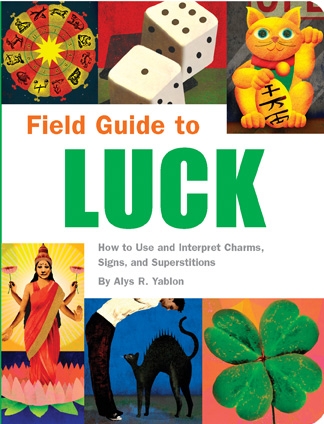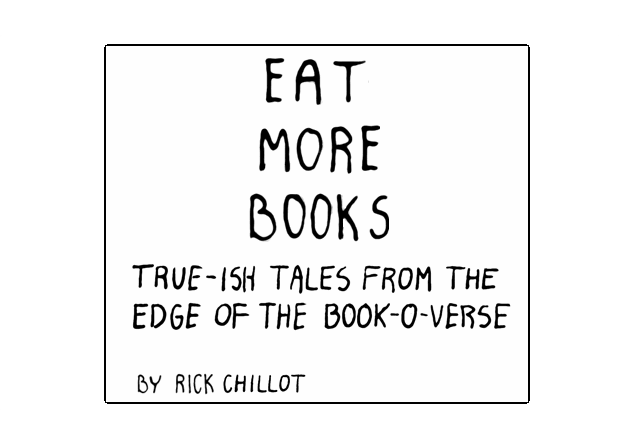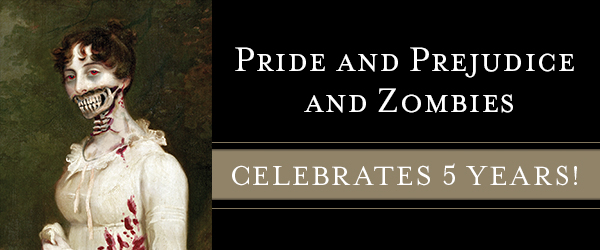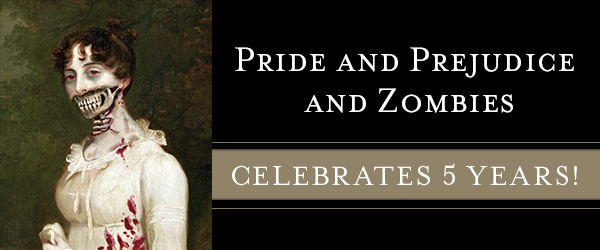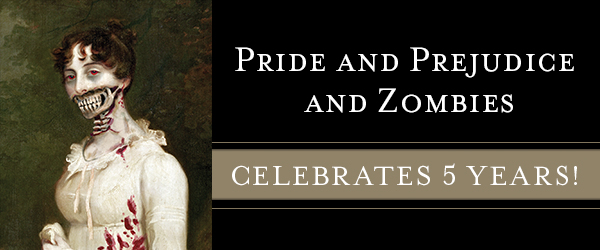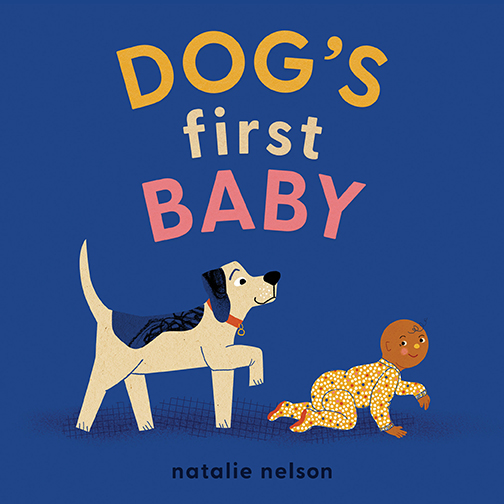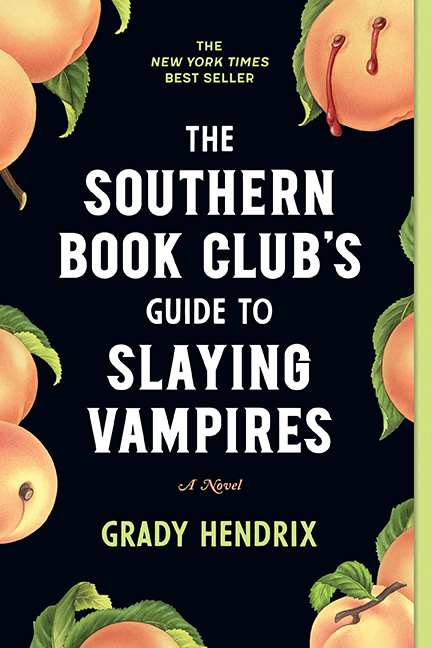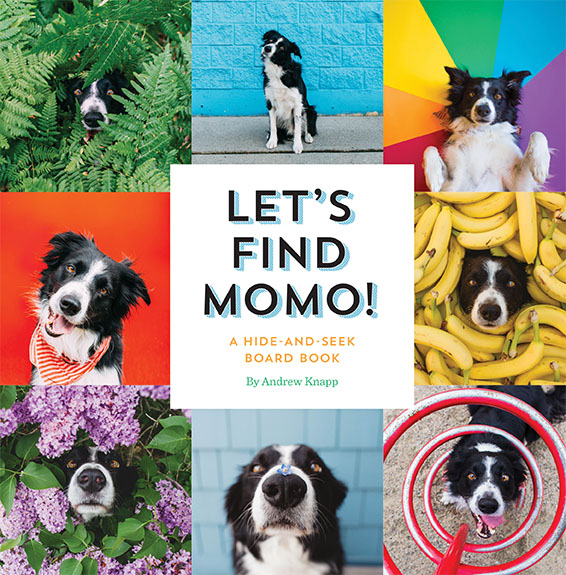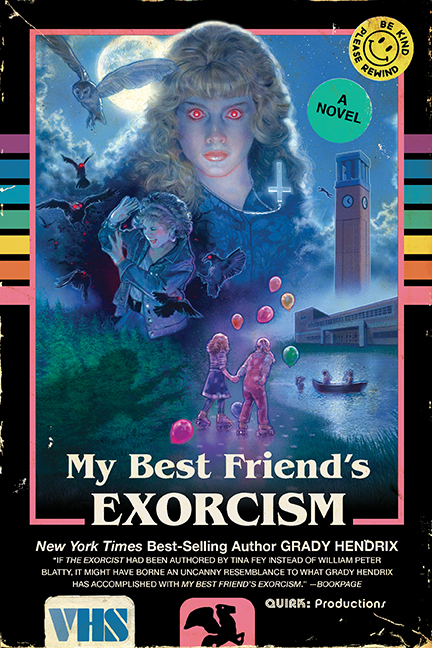Our Blog
Happy (Almost) St. Patrick’s Day: Win a Copy of the Field Guide to Luck!
In addition to our fun little video that spotlighted good luck charms around the Quirk HQ, we thought it would be fun to giveaway a little something to help you find your own bit of luck. So with St. Patrick's Day approaching this Monday, here's your chance to win a copy of Quirk's Field Guide to Luck.
There a number of books in our Field Guide series. Some are made for fussing around the house (Tools, Stains), while others are great for in the kitchen (Candy, Cookies). The Field Guide to Luck is all about the talismans, charms, and symbols scattered throughout the world. And hopefully, using a copy, you'll be able to find yours.
We're giving away TEN copies, and you can enter using the Rafflecopter below. Good luck!
Posted by Eric Smith
Eat More Books, Episode 19: Meetings
Celebrating Five Years of Pride & Prejudice & Zombies
This month, Pride & Prejudice & Zombies turns five. A landmark book for Quirk, it was an enormous bestseller that took the literary world by storm and invented a new genre. The mashup!
To celebrate, we had Thom Dunn, a frequent Quirk contributor and blogger for places like Tor.com, write up a three part editorial about the history of Pride & Prejudice & Zombies. In his piece, he talks about the origins of the book, Quirk's venture into the mashup genre, and our jump into fiction.
You can check out all three parts below.
Pride & Prejudice & Zombies: Part 1 of 3
Pride & Prejudice & Zombies: Part 2 of 3
Pride & Prejudice & Zombies: Part 3 of 3
We're planning a lot more content over the course of the month, from guest blog posts to epic giveaways, so stay tuned! And speaking of those giveaways… we've got one right here! You can enter to win a copy of the Deluxe Heirloom Edition of Pride & Prejudice & Zombies.
Posted by Eric Smith
Pride & Prejudice & Zombies: Part 3 of 3
[Note: Be sure to read the first part in this series, here!]
The “Quirk Classics” line continued with Android Karenina (June 2010) and The Meowmorphosis (May 2011), but it was the success of Steve Hockensmith’s Pride & Prejudice & Zombies expanded universe stories that cemented the publisher’s reputation for clever and unique fiction. While they continued to produce plenty of off-beat non-fiction, editor Jason Rekulak realized that as long as they had a captive audience interested in original fiction, they should run with it. Besides, they didn’t want to be known as just the Pride & Prejudice & Zombies guys (even though the book continues to be the most well-loved of the literary mashup boom).
Quirk pursued the zombie front with 2009’s Night of the Living Trekkies by Kevin David Anderson and Sam Stall, which continued the humorous pop culture-riffing on a zombie attack. This original prose story swapped out Regency England for a comic book convention, replacing aristocratic mannerisms with, well, Trekkies.
In 2011, they released Miss Peregrine’s Home for Peculiar Children by Ransom Riggs. Like Grahame-Smith and Winters before him, Riggs had previously worked on one of Quirk’s non-fiction guides, The Sherlock Holmes Handbook. He had originally pitched Miss Peregrine’s to Quirk as a children’s picture book of bizarre photographs that he had collected, but Rekulak convinced Riggs to craft a narrative out of the photographs instead.
)
Rekulak’s suggestion, and his general commitment to original prose fiction, paid off quite well for the publisher. Miss Peregrine’s Home for Peculiar Children spent forty-five weeks at #1 on The New York Times’ Children’s Chapter Book List, and kept hanging around the top 10 bestsellers for another eighteen weeks after that. The movie rights to the book were sold to 20th Century Fox, and the sequel, Hollow City, was released in January 2014.
Fiction fans clearly had a penchant for unconventional stories tinged with elements of horror or macabre. While the literary mashup craze had died down, Rekulak figured that there was something else they could do in a similar vein without beating an undead horse, so to speak. So the company expanded their children’s offerings from strictly non-fiction with the launch of the Lovecraft Middle School series, middle-grade adventure stories with wonderful shape-shifting lenticular covers about a haunted middle school with a monstrous faculty. The first book in the series, Professor Gargoyle by Charles Gilman (aka “Totally Not Jason Rekulak”), was released in 2012, and was followed by The Slither Sisters, Teacher’s Pest, and Substitute Creature.
#
But Quirk did not ignore the contributions made by “Quirk Classics” writers Steve Hockensmith and Ben H. Winters — without whom their experiment into fiction publishing may not have been as successful. Hockensmith currently helms the Nick & Tesla series, which follows two eleven-year-old siblings (Nick and Tesla, naturally) who are sent to live with their mad scientist uncle after the disappearance of their parents (where chaos and hilarity ensue, of course). Each book features do-it-yourself science projects, to inspire the mad scientist in all of us. The first book, High Voltage Danger Lab, was released in November 2013, with two more due in 2014.
Meanwhile, Ben H. Winters was hard at work with his own excellent ideas for original novels. His horror story Bedbugs was released in 2011, but it was his 2012 novel The Last Policeman in 2012, the first in a trilogy about a police detective on the brink of the apocalypse, that really struck a chord with readers — and beyond. The book won the 2013 Edgar Award for Best Paperback Original and has been optioned for a television series. The sequel, Countdown City, followed in July 2013 and was a finalist for the Philip K. Dick Award as well as being named one of the best books of the year by NPR. The third and final book in the series, World of Trouble, will be released in July 2014.
Most recently, a peculiar manuscript found its way to the desk of editor Jason Rekulak: William Shakespeare’s Star Wars, by Ian Doescher. Rekulak was reticent at first, worried that the literary mashup trend had long since (or overstayed its welcome, depending on who you asked).
But mashups are a genre ripe with endless possibility, and for Rekulak, the book was too good to pass up. And verily, the similar so-simple-why-didn’t-I-think-of-it concept of William Shakespeare’s Star Wars was a hit; Doescher’s pitch-perfect pentameter took the galaxy far, far away to an entirely new stage. The intergalactic bard’s tale is shaping up to follow in the footsteps of its zombified progenitor, and Quirk already has plans to continue the rhythms of Jediambic pentameter with The Empire Striketh Back and The Jedi Doth Return.
But with more and more works entering the public domain — and the Pride & Prejudice & Zombies film still on the horizon — who knows what the future holds for Austen and her zombie brethren? The literary mashup craze was directly responsible for Quirk’s fiction successful publishing arm, and now, five years later, the company has firmly established itself as a premiere (if eccentric) innovator of the publishing industry.
While the recent trend may have burned out faster than a postapocalyptic wasteland awash in napalm, the rest of the company’s fiction output keeps getting better and better, and it’s more than enough to hold us over until the next smack-yourself-in-the-head-for-not-thinking-of-it-first mashup hit.
Posted by Thom Dunn
Pride & Prejudice & Zombies: Part 2 of 3
[Note: Be sure to read the first part in this series, here!]
Ben H. Winters’ working relationship with Quirk Books began with Worst-Case Scenario Pocket Guide: New York City in 2009. By complete coincidence, Winters was already living directly across the street from the Quirk offices when he met Rekulak and the rest of the team at Quirk through his literary agent. While it didn’t hurt to have a local guy on board for some projects, Winters received no preferential treatment when it came to Sense & Sensibility & Seamonsters, the first Quirk follow-up to Pride & Prejudice & Zombies: his strong proposal pitch and sample chapters for the follow-up are what ultimately sealed the deal, according to Rekulak.
Zombies were great, but Quirk didn’t want to simply rip themselves off in attempt to keep their sales up. Their first follow-up kept the Jane Austen piece of the puzzle in place and mashed it up with a different beast, this time with more alliteration. “Everyone was expecting vampires, which meant it couldn’t be vampires,” explained Winters. “Everyone was expecting Quirk to make a different writer its next victim — but Austen had worked so well the first time around. Next thing I knew, I was dog-earing my Barnes & Noble classics edition of Sense & Sensibility, writing cryptic phrases like ‘secretly a merman?’ in the margins.”
Sense & Sensibility & Seamonsters, by Ben H. Winters and Jane Austen, was announced via hilarious YouTube trailer on July 13, 2009 and released on September 15 of that same year, less than six months after the release of Pride & Prejudice & Zombies. While Winters’ method of marking up the margins of the book was certainly similar to Grahame-Smith’s, the ratio of Austen-to-Awesome was slightly different this time around. “The readers who gobbled up Zombies reported back to Quirk that as much as they loved the Jane Austen stuff, they wanted a little less of it,” Winters explained.
“So my mandate on Sea Monsters was to deliver a book that was 60 percent Austen and 40 percent me. Which made my life easier: I don't know if you've ever tried to describe a city built entirely underwater, where wealthy Britons attend costume balls dressed as pirates and government scientists conduct ill-advised experiments whereby fish organs are transplanted into men, but it takes a few paragraphs.”
While it wasn’t quite as successful as Pride & Prejudice & Zombies, Sense & Sensibility & Seamonsters still did tremendously well, including a lengthy stint on The New York Times bestseller list. “Once again, to the consternation of purists everywhere, the result is sheer delight,” said The AV Club. “Winters dives into these fantastical scenarios with gusto, inventing long scenes of mayhem and mystery where Seth Grahame-Smith, who adapted Pride & Prejudice, was far more restrained…But there’s no denying the page-turning satisfaction of this welcome sequel, which exceeds Pride & Prejudice & Zombies in cleverness and wit while continuing to pay proper homage to the deep emotions underlying the original text.”
For a publisher with a previously small fiction list that took a chance on an unprecedented idea, Quirk was seeing a very clear return on their investment. Sure, they had the words of the late Jane Austen on their side, but in just two novels, they had increasingly strayed from the source texts, and while they still weren’t 100% “original fiction,” these derivative works were undeniably transformative. How much further could they go? After all, no one makes a hit just by playing safe.
#
Comedy tends to work in “The Rule of 3s” — 1. Set it, 2. Establish it, 3. Change it. Quirk had clearly established themselves with Sense & Sensibility & Seamonsters, so the next trick was to find a way to change the pattern. But instead of putting all their kraken eggs in one basket, Quirk decided to cast a wider net as they scoured the watery depths of publishing for their next big hit. Why settle for just zombies, or just an Alternate Austen story, or just a classic literary mashup, when you can have all three?
Since MechaEmma didn’t quite roll off the tongue as well as they had hoped, Quirk sent Ben H. Winters on an interplanetary journey with Leo Tolstoy that would eventually culminate in Android Karenina. While they awaited his return, Rekulak also reached out to author Steve Hockensmith with the insane idea of producing a sequel to Pride & Prejudice & Zombies, that continued the alternate history adventures of everyone’s favorite zombie-slaying couple, Lizzie Bennet and Mr. Darcy. Hockensmith had previously written several books in a Sherlock Holmes – Wild West mashup series called Holmes on the Range, which proved his familiarity with genre tropes as well as mashup conventions, even as the genre of literature came into its own.
The “literary mashup” is itself a mashup of terms, but Winters found it to be a useful, it not entirely accurate description. “Strictly speaking, a mashup (like DJ Danger Mouse’s The Grey Album) combines elements from two pre-existing works (the Beatles White Album and Jay-Z’s Black Album). These ‘Quirk Classics’ instead place one pr-existing work in an entirely new context — meaning, for my book, the creepy, there’s-something-beneath-the-surface, the-ocean-will-swallow-us-all context that’s been a staple of Western Culture from The Odyssey through Jaws." H
ockensmith agreed that the books were well within an established tradition: “as far as this genre of mashups is concerned, it’s nothing new. In the 60s there was a movie called Robinson Crusoe on Mars. It’s been done before. It’s a way to have fun. It’s a way to play on the playground and in the amusement park of literature. If we’re going to start walling off parts of the playground and say, you’re not allowed to go there, I just think that’s a loss to everybody.”
Unfortunately, Jane Austen herself never wrote any additional adventures of Elizabeth Bennet, which meant that Hockensmith would have to write an entirely original novel based on the universe and characters that had been established in Pride & Prejudice & Zombies. But as Rekulak and Hockensmith spoke, they realized that the real gem of the storytelling was not in what happened after Lizzie and Mr. Darcy fell in love — but in what happened before. “The more we talked about it the more it swung around to being a prequel because of all of these fun, unanswered questions to play with – not all of which I answered purposely, but certainly we addressed some of them and the one that I found the most interesting was the transformation of Jane Austen’s beloved and demure Bennett sisters into fierce, zombie-beheading warriors. I thought, ‘Now, that would be a fun thing to watch happen, so let’s watch it happen,’” said Hockensmith.
Of course, while the zombie action was a crucial selling point, it was even more important to capture the romance that made the original Pride & Prejudice so timeless in the first place — a particularly difficult task, when readers already knew that the story’s heroine would end up with a man who wouldn’t even be featured in the prequel. “What I tried to do is use the romances that are in the book to explain in someway, or cast some light upon, why Jane and Elizabeth would be drawn to the men they ultimately are…For me Elizabeth has one true love, and that is Darcy. I was not going to mess with that. I wasn’t going to have the tragic pre-Darcy guy who is everything that Darcy is, but dies.”
Even though the prose was completely original and based on a derivative work, Hockensmith still made sure to include a dedication to Austen in the front of the book in hopes of satiating her legions of ardent fans. “I would say that I hope our affection for Jane Austen comes through,” he explained. “That's why it was very important to me that the dedication of the book be ‘For Jane: We kid because we love.’ For me, that captures what I'm all about. I'm not doing this to flip Jane Austen the bird. I'm a guest in her home.”
The resulting prequel, Pride & Prejudice & Zombies: Dawn of the Dreadfuls was released on March 23, 2010, and became a New York Times Bestseller. It was followed by a properly sequential sequel, Dreadfully Ever After, one year later. Although nothing could match the blockbuster sales of the original Pride & Prejudice & Zombies, the books were still remarkably successful by traditional standards.
Hockensmith, too, earned his praise for his ability to capture Austen’s voice, and create compelling and entertaining stories that built upon the established “Alternate Austen” universe in new and exciting ways.
Posted by Thom Dunn
Worst-Case Wednesday: How To Survive in a Life Raft
Hopefully it will not be with a Bengal Tiger, which would make the ordeal even more difficult, but if you want to know how to survive in a life raft, just in case, here is the best way, taken from Worse Case Scenario Almanac: Great Outdoors.
Posted by Jade Gilmartin
